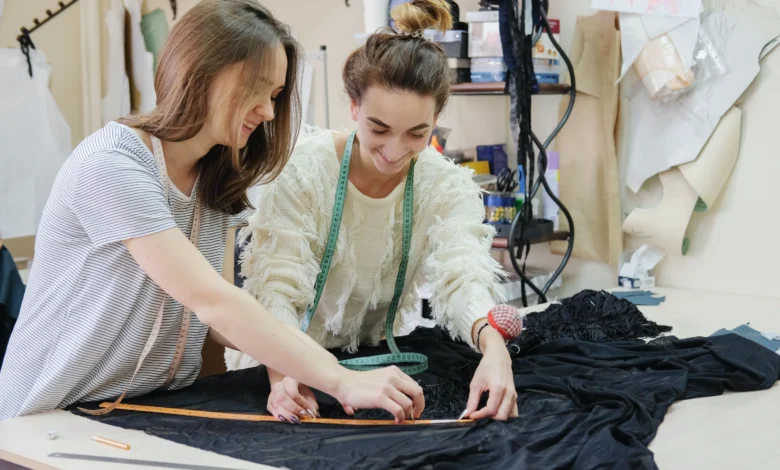Zuschneidfelle: Guide to Precision Leather Cutting

Leatherworking is a craft that blends creativity with precision, transforming raw materials into timeless pieces like wallets, belts, and bespoke shoes. At the heart of this art lies Zuschneidfelle, a term that might sound unfamiliar to newcomers but is a cornerstone for artisans who demand perfection in their work. Derived from the German words “zuschneid” (cutting) and “felle” (hides or skins), Zuschneidfelle refers to high-quality leather hides specifically prepared for precise cutting. These hides are not your average leather; they’re engineered for consistency, durability, and a flawless finish, making them the go-to choice for industries like luxury footwear, saddlery, and custom leather goods. In this guide, we’ll dive into what makes Zuschneidfelle unique, explore its rich history, uncover its modern applications, and share practical tips for artisans looking to elevate their craft. Whether you’re a seasoned leatherworker or just starting out, understanding Zuschneidfelle will open up a world of possibilities in your projects.
Table of contents
- The History and Evolution of Zuschneidfelle
- What Sets Zuschneidfelle Apart?
- Applications of Zuschneidfelle in Modern Craftsmanship
- Tools and Techniques for Working with Zuschneidfelle
- Caring for Zuschneidfelle: Maintenance Tips
- Sustainability and Ethical Sourcing in Zuschneidfelle Production
- The Future of Zuschneidfelle in Leather Craftsmanship
- Conclusion
- FAQs
The History and Evolution of Zuschneidfelle
Leather has been a staple of human craftsmanship for thousands of years, from ancient armor to medieval saddles. The concept of Zuschneidfelle, however, emerged as artisans sought materials that could meet the exacting demands of precision work. Historically, leather hides varied widely based on the animal, region, and tanning methods available. Early craftsmen often worked with whatever hides they could source, which might have imperfections or inconsistent thickness. As leatherworking evolved, particularly in Europe during the Middle Ages, tanners began developing techniques to create hides with uniform texture and thickness, laying the groundwork for what we now call Zuschneidfelle.
By the 19th century, advancements in tanning and leather processing gave rise to specialized hides tailored for specific trades. German craftsmen, known for their meticulous attention to detail, refined these processes, creating leather that could be cut with surgical precision for shoemaking, bookbinding, and upholstery. The term Zuschneidfelle became synonymous with this premium material, prized for its ability to hold shape and resist stretching. Today, Zuschneidfelle has evolved further with modern tanning methods and sustainable practices, blending old-world craftsmanship with cutting-edge technology to meet the needs of contemporary artisans and manufacturers.
What Sets Zuschneidfelle Apart?
So, what makes Zuschneidfelle different from standard leather? It’s all about preparation and purpose. Unlike generic hides, which may have variations in grain, thickness, or blemishes, Zuschneidfelle undergoes rigorous processing to ensure uniformity. The hides are typically sourced from the best parts of the animal—often cattle or sheep—and subjected to advanced tanning techniques that prioritize structural integrity and a smooth surface. This results in a material that’s not only visually appealing but also easy to cut and shape without fraying or uneven edges.
There are several types of Zuschneidfelle, each suited to specific applications. It’s a favorite for high-end shoes and luxury bags where durability and aesthetics are paramount. Corrected-grain Zuschneidfelle, lightly sanded to remove imperfections, offers a uniform look ideal for fashion-forward products. Then there’s vegetable-tanned Zuschneidfelle, treated with plant-based tannins for an eco-friendly option that develops a rich patina over time. Chrome-tanned versions, on the other hand, use chromium salts for faster processing and a softer, more pliable texture. Each type serves a unique purpose, giving artisans the flexibility to choose the perfect material for their project.
Applications of Zuschneidfelle in Modern Craftsmanship
Zuschneidfelle’s versatility makes it a mainstay in industries where precision and quality are non-negotiable. In luxury footwear, these hides are used to craft shoes and boots that combine durability with elegant finishing. The consistent thickness ensures a perfect fit, while the smooth grain enhances the visual appeal. Designer handbags and accessories also rely on Zuschneidfelle for their uniformity and strength, allowing artisans to create intricate patterns without worrying about material flaws.
Beyond fashion, Zuschneidfelle plays a critical role in saddlery, where toughness and reliability are essential. Equestrian gear makers trust these hides to produce saddles and straps that withstand years of use while maintaining a polished look. In interior design, Zuschneidfelle is used for upscale furniture detailing, adding sophistication to chairs, sofas, and decorative accents. Even in niche applications like bookbinding or automotive upholstery, these hides deliver the precision and durability needed for high-end results. The ability to cut cleanly and hold shape makes Zuschneidfelle indispensable for any project where craftsmanship is the priority.
Tools and Techniques for Working with Zuschneidfelle
Working with Zuschneidfelle requires the right tools and techniques to maximize its potential. Unlike standard leather, which might forgive minor errors, Zuschneidfelle demands precision to maintain its premium qualities. A sharp cutting tool, such as a rotary cutter or a high-quality utility knife, is essential for clean, controlled cuts. For straight lines, using a metal ruler as a guide can prevent crooked edges. When cutting curves, it’s better to rotate the leather rather than the tool to maintain consistency.
A slight angle of the blade typically 15 to 30 degrees can produce smoother cuts, especially on thicker hides. Start with light pressure and increase as needed to avoid tearing. After cutting, edges may need refining with a beveler or sandpaper to remove roughness, followed by burnishing for a polished finish. Patience is key; rushing can lead to mistakes that are hard to correct on such high-quality material. Testing cuts on scrap pieces first can also help you gauge how the leather behaves, ensuring your final project is flawless.
Caring for Zuschneidfelle: Maintenance Tips
To keep Zuschneidfelle in top condition, proper care is essential. Whether you’re storing raw hides or maintaining finished products, a few simple practices can extend their lifespan. Low humidity is critical to prevent mold growth, so consider using silica gel packets in storage spaces. Dust can accumulate on hides, so wipe them down with a soft, dry cloth periodically. For long-term storage, conditioning with a leather-specific product can keep the material supple.
For tools used with Zuschneidfelle, such as cutting knives or mats, regular maintenance is equally important. Clean blades after each use to remove leather residue, and sharpen them with a honing stone or strop to ensure precision. Cutting mats, especially self-healing ones, should be cleaned with mild soap and water to maintain their surface. By treating both the leather and your tools with care, you’ll ensure consistent performance and stunning results in every project.
Sustainability and Ethical Sourcing in Zuschneidfelle Production
As sustainability becomes a priority in the leather industry, Zuschneidfelle producers are leading the way with eco-friendly practices. Many source their hides from suppliers who prioritize animal welfare and adhere to strict environmental standards. Vegetable tanning, for example, uses plant-based materials instead of harmful chemicals, reducing the environmental impact. Some producers also repurpose leather scraps into smaller items, minimizing waste. Natural dyes are increasingly replacing synthetic ones, offering vibrant colors without compromising safety.
Ethical sourcing is another key focus. By partnering with local farms, Zuschneidfelle producers support community livelihoods while reducing their carbon footprint. These practices not only align with consumer demand for transparency and sustainability but also enhance the material’s appeal. Artisans can feel confident that their work reflects both quality and responsibility, adding value to their creations in a market that increasingly values ethical production.
The Future of Zuschneidfelle in Leather Craftsmanship
The demand for premium, sustainable materials is driving innovation in Zuschneidfelle production. Advances in tanning chemistry are creating even more consistent and durable hides, while automation in cutting processes is improving efficiency for large-scale manufacturers. Digital supply chains are also emerging, offering transparency by tracking hides from source to final product. Bio-based tanning solutions, which use renewable resources, are gaining traction as an eco-friendly alternative to traditional methods.
For artisans, these developments mean greater access to high-quality materials that align with modern values. As customization and personalization dominate fashion and design, Zuschneidfelle’s ability to deliver precision and durability will keep it at the forefront of craftsmanship. Whether you’re crafting a bespoke handbag or a pair of custom boots, these hides offer the perfect blend of tradition and innovation, ensuring your work stands out in a crowded market.
For more tips and techniques, check out The Future of Minimalist Style
Conclusion
Zuschneidfelle is more than just a material; it’s a testament to the artistry and precision of leather craftsmanship. From its historical roots to its modern applications, this premium leather hide empowers artisans to create stunning, durable pieces that stand the test of time. Whether you’re cutting a perfect pattern for a luxury shoe or shaping a saddle that will last for generations, Zuschneidfelle offers unmatched quality and versatility. By mastering the tools, techniques, and care practices outlined in this guide, you can elevate your leatherworking projects to new heights. As the industry embraces sustainability and innovation, Zuschneidfelle remains a timeless choice for those who value craftsmanship and creativity. So, grab your tools, select your hide, and let Zuschneidfelle inspire your next masterpiece.
FAQs
What exactly is Zuschneidfelle, and how is it different from regular leather?
Zuschneidfelle is a German term meaning “cutting hides,” referring to high-quality leather processed for precision cutting. Unlike regular leather, which can vary in thickness or texture, Zuschneidfelle is engineered for uniformity and durability, making it ideal for luxury goods like shoes, bags, and saddles.
How do I choose the right type of Zuschneidfelle for my project?
It depends on your project’s needs. Full-grain Zuschneidfelle is great for durable, high-end items like shoes due to its natural strength. Corrected-grain is better for a uniform look in fashion items. Vegetable-tanned hides are eco-friendly and develop a patina, while chrome-tanned are softer and more pliable.
How often should I sharpen my tools when working with Zuschneidfelle?
Sharpen your cutting tools every few projects or when you notice cuts becoming less smooth. A sharp blade ensures clean edges and reduces strain, so regular honing with a stone or strop is a must.
Can beginners use Zuschneidfelle effectively?
Absolutely! Start with a straight-edge cutting tool and a self-healing cutting mat for precision. Practice on scrap pieces to get a feel for the material, and take your time to avoid mistakes.
Where can I buy authentic Zuschneidfelle?
Look for reputable suppliers specializing in premium leather, often found through leatherworking communities or online retailers. Ensure they prioritize ethical sourcing and quality tanning processes.
How do I care for Zuschneidfelle to ensure it lasts?
Store hides in a cool, dry, well-ventilated area away from sunlight. Wipe them down with a soft cloth to remove dust, and condition periodically if storing long-term. For finished products, use leather-specific care products to maintain suppleness.





